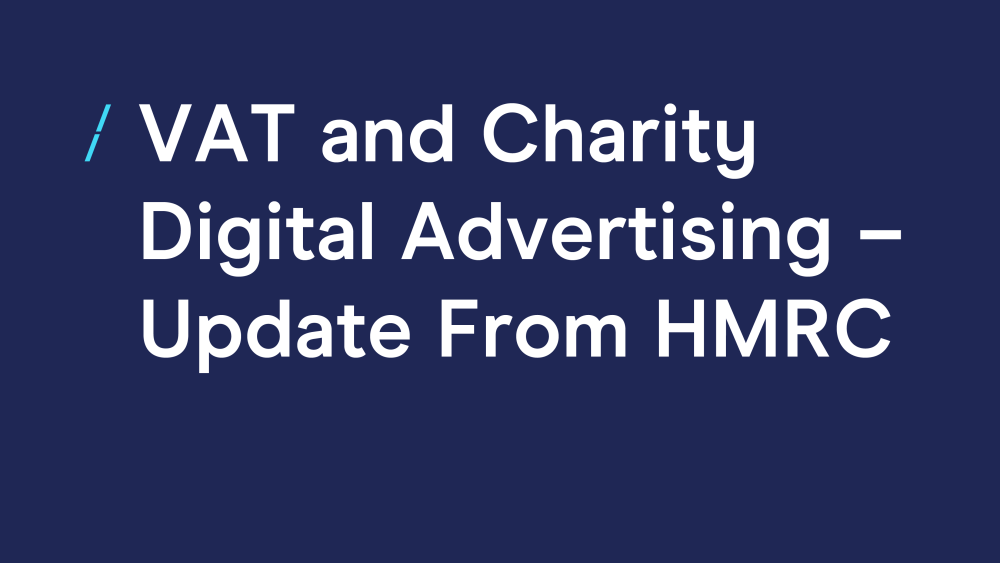VAT and Charity Digital Advertising - Update From HMRC
05 Aug 2020

In the fast-moving and constantly changing landscape of digital advertising, HMRC’s published guidance about the VAT liability for charities has not kept pace. Recent correspondence from HMRC sets out some important changes.
In the absence of any specific VAT guidance about digital advertising, we must revert to the law. The law says that charity advertising cannot be zero-rated if: ‘members of the public (whether individuals or other persons)…are selected’.
The law goes onto say that this includes being selected by address (including e-mail address or address for electronic communications purposes) or at random. The emphasis is on selection.
To qualify for charity relief an advert needs to be served to a wide enough audience to be regarded as the “general public”.
So, for instance, a TV advert which goes out at a certain time of day and during a certain type of programming will qualify for relief because while it is intended to target a certain type of audience, it does not involve the selection of individuals. By contrast, an advert which is sent via email targets specific individuals and so does not qualify.
While the above examples are relatively easy to define, there are many forms of digital advertising where “selection” is not so determinate. This has caused confusion for charities and their suppliers such that many have struggled to properly account for VAT.
Because of these uncertainties, interested parties have been lobbying HMRC over several years to seek better information about how charity relief should be applied when dealing with digital advertising. The DMA has been part of this process, liaising with other industry bodies and taxation professionals. Communication with HMRC on these matters has been co-ordinated by the Charities Tax Group (CTG).
Whilst there is a lot of technical detail, the salient point is that HMRC policy now provides for a wider scope of digital advertising methods to qualify for charity relief. The basis of these changes is HMRC’s acceptance that the methods involved do not involve the selection of individuals.
What happens next?
Members should take this opportunity to review their portfolio of digital advertising services and identify if the new policy applies.
There is nothing in HMRC’s letter about applying this new policy retrospectively but there is no obvious reason why it shouldn’t. However, if it is to be applied retrospectively, we are restricted by law to going back four years only.
Click here to view HMRC’s most recent response to the CTG.
If you have any questions the DMA’s VAT Helpline is accessible via the usual Legal Team email address legaladvice@dma.org.uk.
Please login to comment.
Comments